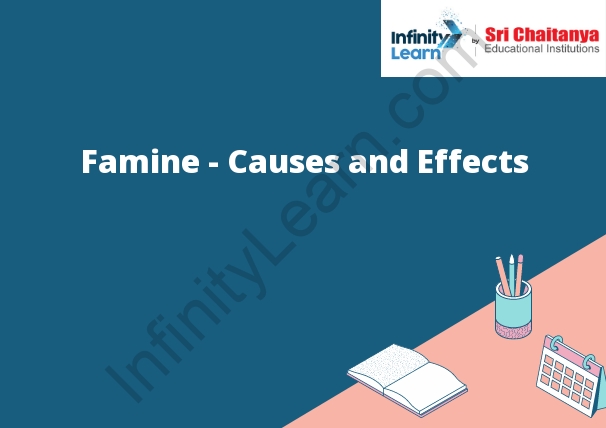Table of Contents
Famine – Introduction
A famine is a situation where there is a severe shortage of food, resulting in widespread hunger and death. Famines can be caused by a variety of factors, including natural disasters, war, and economic instability. Despite the fact that famines have occurred throughout human history, many people remain unaware of their causes and effects.
This essay will discuss the definition, causes, and effects of famine. It will also explore the ways in which famine can be prevented.
Famine is a situation where there is a severe shortage of food, resulting in widespread hunger and death. The United Nations defines famine as “a situation of acute food insecurity in which at least 20% of the population is unable to acquire enough food to meet their minimum dietary needs.”
Famines can be caused by a variety of factors, including natural disasters, war, and economic instability. Droughts, floods, and crop failures can all lead to famine. In addition, conflict can disrupt food production and distribution, leading to shortages and famine. Economic instability can also cause famine, as when a country experiences hyperinflation or a recession.
Famines can have devastating effects on individuals and communities. People who are affected by famine often experience extreme hunger and malnutrition. This can lead to death and other health problems. Famine can also cause social unrest and political instability.
There are many ways to prevent famine. Governments can invest in food security programs, which help to ensure that people have access to food. They can also provide humanitarian assistance to people who are affected by famine. Additionally, international organizations can work to promote food security and improve food distribution.

Conditions Leading to Famine
There are many conditions that can lead to famine. These include war, drought, and political instability.
Characteristics of a Famine
A famine is a widespread scarcity of food that causes people to starve. Famine is usually accompanied by widespread malnutrition, which in turn leads to diseases such as tuberculosis, measles, and cholera. A famine can also lead to social unrest and political instability.
Famines in India
There have been a number of famines in India throughout its history. The last major famine was the Bengal famine of 1943. The famine killed an estimated 2.1 million people and affected millions more.
Causes of Famines
In many cases, famines are the result of natural disasters such as floods or droughts. However, famines can also be caused by human actions, such as war or economic policies.
The most common cause of famine is drought. When there is not enough rain to grow crops, the people in the area will suffer from famine. Drought can be made worse by deforestation. When trees are cut down, it increases the amount of sunlight that reaches the ground. This makes the soil dry out faster.
A famine can also be caused by a flood. When a river breaks its banks, it can flood the surrounding land. This can damage crops and homes, and it can also contaminate the water supply.
A famine can also be caused by war. When a country is in the middle of a war, the people will suffer from famine. This is because the war will interrupt the food supply. It can also damage the infrastructure, which makes it difficult to transport food.
A famine can also be caused by economic policies. When a country adopts policies that increase the price of food, the people will suffer from famine. This is because the people will not be able to afford to buy food.
Human Intervention
Human intervention is the process of manipulating or altering the natural environment in order to achieve a desired outcome. This can involve things like planting trees, building dams, and controlling the flow of water. Human intervention can also involve the use of technology, such as pesticides and herbicides.









